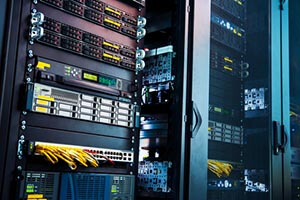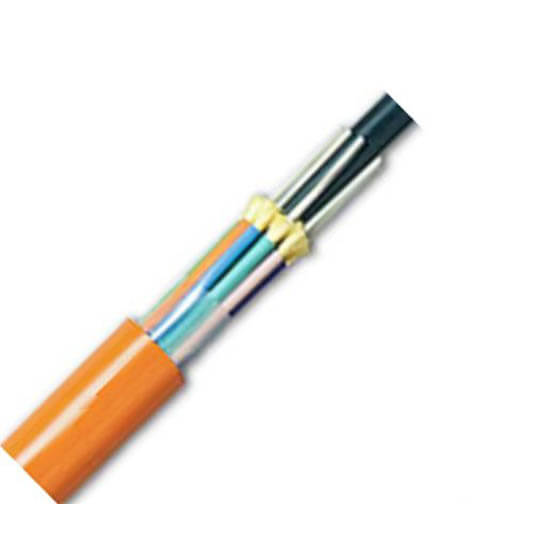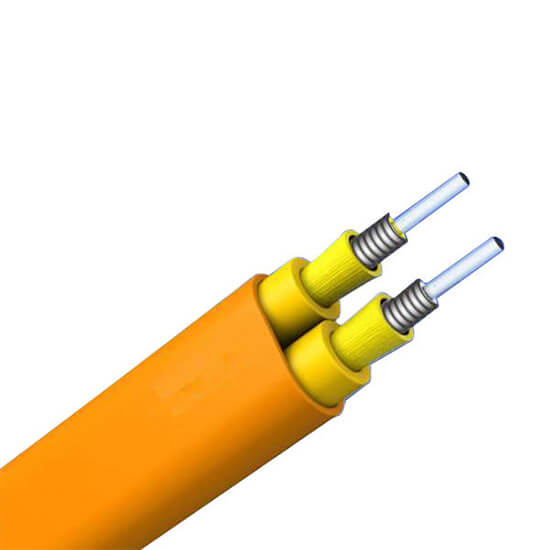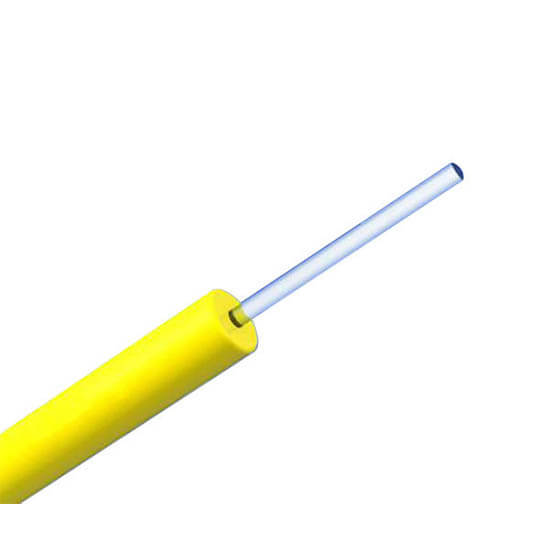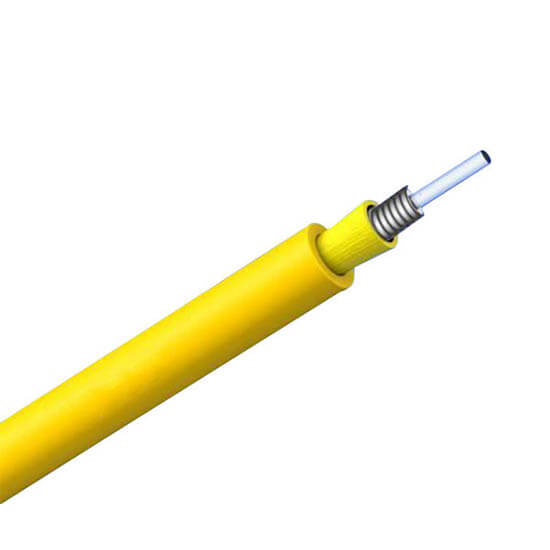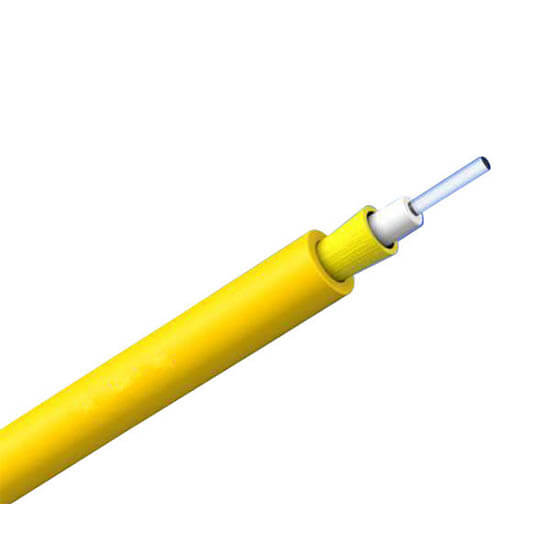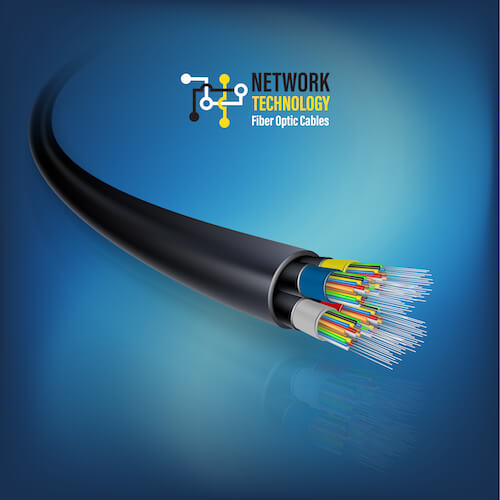Indoor Fiber Optic Cable
Indoor Fiber Optic Cable
Otscable is Indoor fiber optic cables manufacturer based-in China since 1998. The indoor cables otscable offers are high-quality with factory price. Feel free to request a free quote or ask free samples to do evaluation.
Request A Quote for more details
Dynamic, Versatile Fiber Optic Cable Ideal for Home and Office Indoor Installations
Reaching out to billions of people with information has never been easier and faster. All thanks to fiber optic internet solutions and communication technology. Even more incredible is how the new era of FTTX trend is quickly dominating the telecommunication and broadband network industry.
Otscable surfs along waves of the new fiber optic generation with their top-of-the-line Indoor Fiber Optic Cables. We have designed a variety of tightly buffered Fiber Optic Cables that are specifically for indoor use.
Our Indoor cables are constructed with a narrow body and flexible feature so that you can easily install them behind walls, under the furniture or in small cabinets. We make sure that they are extremely safe for home fiber or office fiber use with fire retardant coating and low smoke sheathing in case of fire hazards. You can relax and cozy up with your ease of data transfer, communication and bandwidth usage splurge from your installed home fiber optic network.
Plus, it doesn’t hurt that we are offering them at a very low price! We cater to OEM/ODM indoor fiber optic cable request, you name it. We can meet your requirements as we are manufacturing our indoor fiber optic cables in our inhouse factory. We will guide you in every step of the way.
Quick Navigation:
What is an Indoor Fiber Optic Cable?
Why Use a Tight Buffered Cable for Indoor Fiber Optic Applications?
Indoor Fiber Optic Cable Construction
Indoor Fiber Optic Cable Manufacturing Process: How is it made for Indoor Use
What are the Different Types of Indoor Fiber Optic Cable?
Why Choose OTSCABLE Indoor Fiber Optic Cable?
What is an Indoor Fiber Optic Cable?
An Indoor Fiber Optic cable is a fiber optic cable that is flexibly built and constructed with a tightly buffered group of fibers. These are designed to run for short distances only. The distances may only be from building to building or from one floor to another in an office or home fiber optic cabling system. Moreover, indoor fiber optic cables are used for backbone fiber optic installations and can be run in narrow riser or plenum spaces.
Why Use a Tight Buffered Cable for Indoor Fiber Optic Applications?
As we like you to experience solid internet streaming, optimized bandwidth and communication with maximized fire safety precautions, we use tight buffered cables for our Indoor Fiber Optic cables. The reason is that the construction of tight buffered indoor fiber optic cables are effective for retarding flames incase of fire threat as they are compliant with ANSI/UL 1666-1997.
Tight buffered cable is also easier to splice or split and install as there is no gel-filling inside the cable. Thus, with this compact feature, indoor fiber optic cables provide more room for internal backbone cabling, horizontal cabling distribution and riser installations.
This can be very useful for busy and complex data industries where equipment rooms are filled with piles of cable racks and fiber patch cords.
If you want to know more on how we manufacture tight buffered fiber optic cable for indoor use, check out our manufacturing process for this type of cable.
Indoor Fiber Optic Cable Construction
Indoor Fiber Optic cables are constructed with various materials. The outer jacket of the cable is built to resist corrosion and ultraviolet radiation while preventing water contamination. Also, the outer jacket is fire retardant and is made of LSZH or ROHS compliant PVC materials that do not pose environmental and health risks.
Aside from the tight- buffer constructed optical fiber inside, the cable is also composed of the FRP, a non- metallic material for strength and the Aramid yarn used to further provide strength and resist high tension applied to the cables.
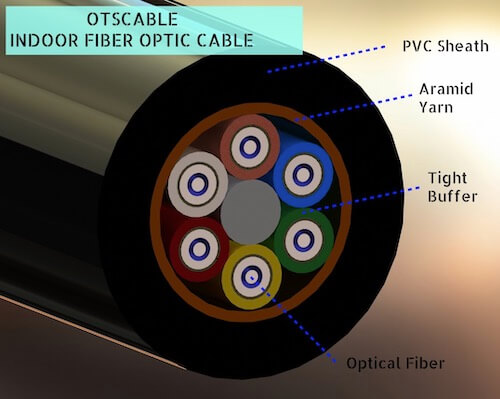
Indoor Fiber Optic Cable Manufacturing Process: How is it made for Indoor Use
Tightly-buffered Indoor Fiber Optic Cable is made similarly as the loosely-buffered fiber optic cable used for outdoor application.
Generally, we start with obtaining a highly purified silica glass with very few impurities. Then the following steps summarizes the process in manufacturing indoor fiber optic cable.
- Manufacturing a preform glass cylinder
- Drawing process of the fibers
- Extrusion of plastic over the fiber coating
- Strengthening, sheathing and spooling
#1 Manufacturing a preform glass cylinder
The glass used in the preform is made through Modified Chemical Vapor Deposition, or MCVD. In this process, a precise mixture of Germanium Chloride (GeCl4), Silicon Chloride (SiCl4), and many other chemicals is bubbled with oxygen. The mixture will dictate the physical and chemical properties of the glass to be formed.
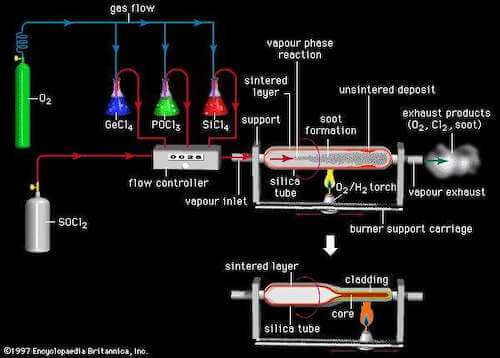
The mixture is then placed inside a quartz tube or synthetic silica which are cleaned in hydrofluoric acid. This glass tube is spun in a lathe while being heated with a torch outside the tube. The heat will result in chemical reactions, forming Silicon dioxide and germanium dioxide. Both of them will be deposited and fused inside the glass tube. This is the preform glass cylinder which will be drawn into fibers.
#2 Drawing Process of the Fibers
A special equipment called the drawing tower will be used to produce the fibers. The preform is loaded vertically in the tower, while the preform tip is exposed by a furnace. The heat, which ranges from 1,900 to 2,200 degrees Celsius, melts the preform until it falls down through gravity. As it drops slowly, it cools down and forms the thread-like fiber.
#3 Extrusion of plastic over the fiber coating
At this point, the fibers are made and are passed through a cabling assembly unit that comprises a buffering assembly line that applies loose or tight coating on the optical fibers. Tight buffering is made by direct extrusion of plastic over the fiber coating. The tight-buffering process function to preserve strength, absorb shock and provide additional fiber protection.
#4 Strengthening, sheathing and spooling
Afterwards, the tightly buffered fibers are applied with reinforcing PVC sheath that protects it from impact and shock.
A spool controlled by a tractor mechanism slowly pulls the created fiber and creates the spool of the fiber, but is monitored and controlled by a laser micrometer. The measurements taken by the micrometer will ensure the precision of the fiber diameter throughout its length. Typically, the fibers are pulled at a rate of 10 to 20 m/s.
Quality Control
OTSCABLE not only assures the best quality Fiber Optic Cables are delivered into the market, but also upholds an environmental responsibility of disposing the raw materials, in-process products and end-products which can potentially harm the environment.
OTSCABLE follows a round of quality checks throughout the production process from raw material acceptance to production and to end-products processing prior to shipping.
Raw-Material Quality Control (RMQC)
High-quality raw material is paramount in delivering standard-wise end-products. Upon delivery of the raw materials, they go through inspection that determines whether they pass or fail. Failure to meet specific standards will automatically reject the raw materials.
Production Quality Control (PQC)
Mass producing fiber optic cables from the raw materials stored in the warehouse is carried out in the production area.
OTSCABLE also carries out a series of quality checks in the production area whether daily, weekly, monthly or yearly. This is to check if certain measures should be done in their machines or manufacturing process should be improved or fixed to meet safety standards for both the process and their employees.
In-Process Quality Control (IPQC) and Unfinished Product Quality Control (uPQC)
These are checks that are carried out during mass production is completed. In-process materials would be strictly tested for identity, quality, strength and purity as appropriate and approved or rejected by the quality control unit during the production process.
Quality Control Before Packing and Final Quality Control
Before the spooled fiber optic cables are packed or boxed, the QC unit checks the products for the following:
- Tensile strength of the fiber
- Attenuation
- Bandwidth
- Numerical aperture
- Cut-off wavelength
- Mode field diameter
- Chromatic dispersion
The following physical checks are also performed for both multimode and single-mode fibers:
- Cladding circularity/eccentricity
- Cladding diameter
- Coating outer diameter
- Coating outer non-circularity
- Coating concentricity error
- Core-clad concentricity error
- Core non-circularity
- Core diameter
Certifications
CE Approved
Products with a CE marking indicates conformity with safety, health and environmental protection standards for products sold within the European Economic Area (EEA), however, this is also recognizable worldwide.
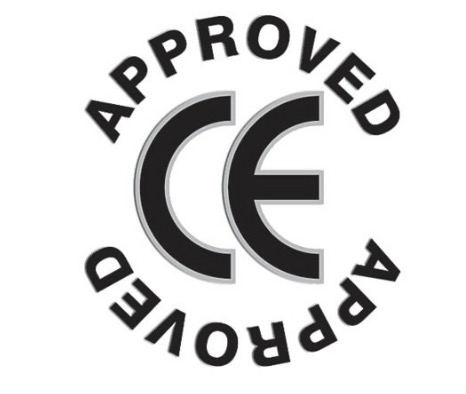
RoHs
RoHS stands for Restriction of Hazardous Substances. A RoHS listed product means the product has passed qualifications preventing the use of banned hazardous materials electrical and electronic products. These materials are hazardous to the environment and cause pollution to landfills. Moreover, they are dangerous when exposed during manufacturing and recycling.
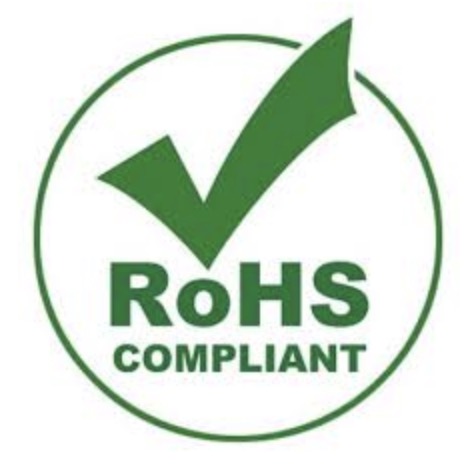
UL
Underwriters Laboratories (UL) is a Nationally Recognized Testing Laboratory (NRTL) recognized by the Occupational Safety and Health Administration (OSHA). As an NRTL, UL devises, publishes, updates, and maintains minimal standards that certain types of products: magnetic components, electronics, plastics, potable water and others.
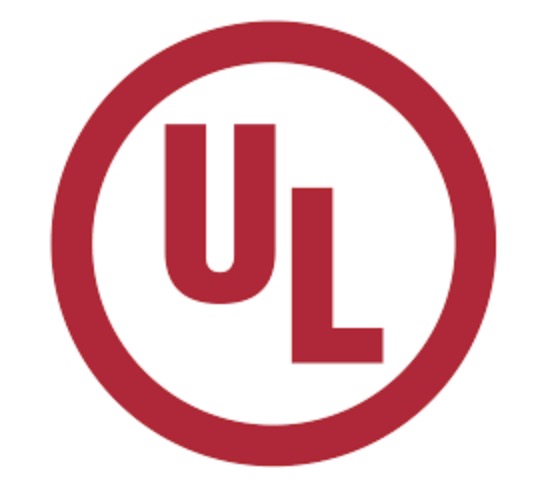
What are the Different Types of Indoor Fiber Optic Cable?
Our Indoor Fiber Optic cables come in different types so you can choose what fits your application the best. We have GJFJV, GJFJZY, GJFJBV, GJFJBZY, GJFDBV and GJFDBZY.
0.6 GJFJV Indoor cable
This is a tight buffer indoor fiber optic cable with a non-metallic reinforced component with fiber filled sleeve coated structure and with a PVC jacket sheath. It has a very narrow body of only 0.6mm with a tolerance of only +/-0.05. It can fit any confined space.
0.9 GJFJV Indoor cable
This is a tight buffer indoor fiber optic cable with a non-metallic reinforced component with fiber filled sleeve coated structure and with a PVC jacket sheath. It has a very narrow body of only 0.9 mm with a tolerance of only +/-0.05. It can narrow spaces, but not as small as the 0.6 GJFJV cable.
Flat Twin (GJFJV) Indoor cable
Flat Twin (GJFJV) Fiber Optic Cable for indoor use with tight buffer (900um or 600um). This has dual single-fibers as basic unit flat twin configuration, designed economical and easy installation
GJFJV(Single-Fiber) Indoor cable
Has single fiber and is used for indoor applications. It has an withstand stress on its own and has a strong capability to be a single member cable.
Features
- Small diameter cable, physically soft cables, high flexibility, lightweight, and easy to splice and strip.
- Has large capacity transmission and low attenuation.
- Excellent mechanical properties with high strength Kevlar member to resist tension.
- Ensure environmental and health safety, complies with relevant standard requirements.
- Flame retardant.
- long-term stability in transmission, suitable for maintenance or new installation.
- No need for patch panel and pigtails with a direct connection between tight-buffered cables.
Application
- Connection of cables between buildings.
- Made for indoor distribution.
- Can install on wall, ceiling, layers, and tubes with soft cables
- Pigtail jumper or patch cord
- Good for floor installation with easy maintenance
- With convenient installation and simple operation, it is suitable for any of your communication equipment.
Frequently Asked Questions
Products Order FAQS
How is your terms of payment?
Our terms of payment is usually via telegraphic transfer (T/T), but you can suggest other options that we may consider such as Letter of credit (L/C). We usually let the customer pay 30% in advance and 70% balance before shipping.
What’s your delivery time?
Our delivery time is usually after 30 days, but special considerations for short orders may be accommodated for a shorter time. At OTSCABLE, we value intimate communications with our clients so that both parties are satisfied at the end of the day.
How about your price and MOQ?
About the price, it is best that you contact us, but at this early stage of wanting to know about our price range, we can assure you the best quality with the most competitive price you could ever find.
We have also special considerations for small orders so you won’t have to worry about MOQ.
Can I get the schedule of my order?
Sure, when we begin your order, we could tell you everything.
When will I receive my customs clearance documents?
After we confirm that we have received your remittance, we will immediately arrange a DHL shipping to your requested address.
Products Sample FAQS
How can i get a free sample?
The purpose of the business is Win-Win, we are glad to receive your email about enquiry, free sample, etc.
Which information do i must provide?
Name, Email, Company, Country, City, Address.
Which express company do you have?
DHL, UPS, EMS, TNT, FEDEX or you can suggest.
How long does it take to my address?
One week is the usual duration before you can receive your free sample.
Why Choose OTSCABLE Indoor Fiber Optic Cable
Would you like to partner with us for your ODM/OEM needs for indoor fiber optic cables? Well let me tell you that you have landed on the right China Optic Fiber Cable supplier and manufacturer!
Not only do we design and manufacture a variety of high quality and high performance indoor fiber optic cables, but we also offer outdoor fiber optic cables.
Our network cables create vast opportunities for data centers, home fiber internet providers and telecommunications industries with the best and most cost-efficient optical systems we provide.
We have been a trusted China cable exporter for more than 17 years and have actively and reliably supplied different countries around the globe. Our responsive and expert team members can collaborate with you from your design stage to feature selection, fiber optic cable manufacture, up to product delivery.
Here at Otscable, we give the highest dedication and passion in what we do to meet and exceed your cabling requirements and provide the best customer-service and after-sales service.
Industries Solutions


Data Center Cabling

Enterprise Networks

Optical Cable OEM
